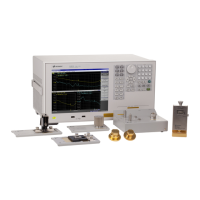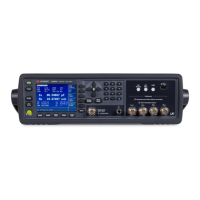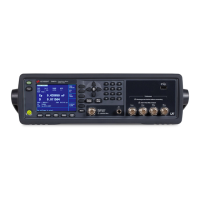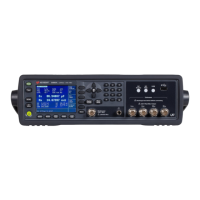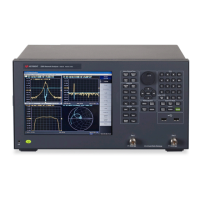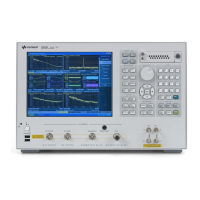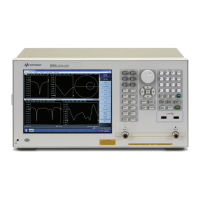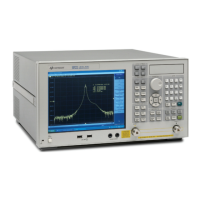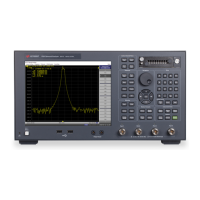Quick Start
45
2. Enter 100 Hz.
• If you are using the ENTRY block keys, type: [1][0][0], and
press the [1] key in the ENTRY block. This puts your entry into
effect.
3. Press the Stop key. The current setting of the sweep stop value
appears at the Stop parameter.
4. Enter 100 MHz.
• If you are using the ENTRY block keys, type: [1][0][0], and
press the [M/m] key in the ENTRY block. This puts your entry
into effect.
Set the Measurement Speed
1. Press the Avg key to display the Average menu.
2. Click the Meas Time and select 2 as the measurement bandwidth.
• Meas Time 1 provides the fastest measurement and 5 provides
the slowest but more precise measurement.
Fixture Compensation
• Perform Fixture Compensation for the Open Circuit State
• Perform Fixture Compensation for the Short Circuit State
Other topics about Measurement Example
Next, you need to eliminate errors produced between the test fixture and
the E4990A. This process is called “fixture compensation.” You can perform
the process by using three compensation functions: OPEN, SHORT, and
LOAD.
All calibration settings, including those established
through fixture compensation, are applied to both Traces 1 and
2. You can execute each compensation function without
specifying the active trace or checking the current state.
Perform Fixture Compensation for the Open Circuit State
1. Press the Cal key to display the Cal Compen (Calibration
Compensation) menu.
2. Press the Fixture Compen softkey to display the Fixture Compen
(Fixture Compensation) menu.
3. Ensure that the two test electrodes, HIGH and LOW, of the connected
text fixture (16047E) are open. Fix the two electrodes in position by
turning clockwise the fixture’s two electrode fastening screws.
